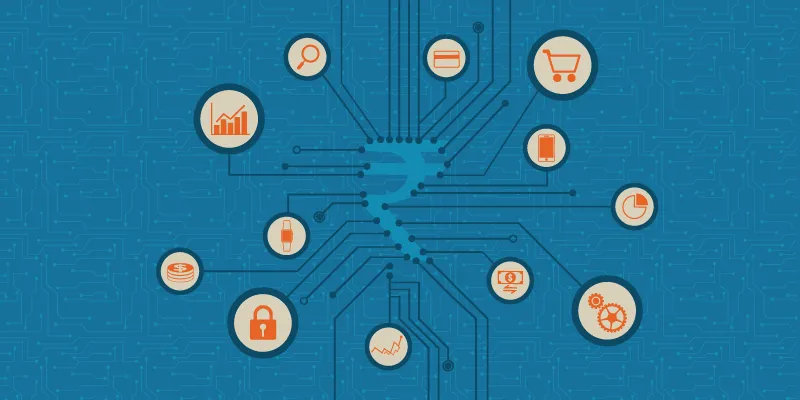Big Data and new-age fintech companies are poised to revolutionise India’s finance sector
Big Data, predictive models and Aadhaar have combined to give India’s fintech startups the ability to assess financial risk in faster, more accurate, and more reliable way.

Imagine never having to visit a bank physically ever again. The picture receiving any kind of financial product merely at the touch of a button, the verification being carried out through your phone’s fingerprint scanner. Algorithms will process your information and select the best financial product for you instantly, and funds will be digitally transferred to your account.
This is the brave new world that India’s new-age fintech companies are trying to create for Indian businesses and consumers using Big Data.
The information gap
The lack of reliable information about potential borrowers and customers was a particularly troublesome roadblock for India’s legacy financial players.
To determine creditworthiness, these institutions would study a customer’s transactional history; the lack of a comprehensive fiscal record would, therefore, automatically disqualify many Indian MSMEs and individuals from finance sourced from leading banks.
Further, even for those who would qualify in terms of the quantum of information required, the long-drawn-out and laborious process for delivery of financial products would require multiple visits to bank branches, several different types of documents, and would take weeks - sometimes even months - for the manual processing of that information. This led to an inequitable distribution of finance, further exacerbated by the troublesome and lengthy application process.
Legacy BFSI players were unable to access verifiable data and information, especially for those who fell outside the formal banking system.
And then, smartphones and Aadhaar managed to create a verifiable and reliable treasure trove of information for over a billion Indians.
The perfect dataset

India’s smartphone revolution and Aadhaar initiative have togther created the perfect dataset.
Smartphone penetration in India has almost doubled since 2014, and it is estimated that 33.4 percent of all Indians are armed with anywhere between 300 and 400 million smartphones. This has brought 462 million Indians access to the internet.
Coupled with the spread of Aadhaar and the development of India’s digital infrastructure, there is now a fast and reliable way for governments, businesses, and developers to access a rich dataset for millions of Indians. The simultaneous creation of powerful data-crunching machine learning leveraging algorithms has provided a way to process and analyse this information to deliver applications with immense potential.
These cutting-edge algorithms can analyse the digital footprints of Indians to create reliable and accurate predictive models that can drive important decisions about their financial wherewithal and creditworthiness. The use of data that goes beyond tax returns, bank statements, and credit bureaus enhances the ability of Indian citizens and businesses outside the formal banking system to access credit. This data is the raw material for a variety of new, hithetro inaccessible Big Data applications, for new synergy in the Indian financial market.
The new present, the radical future

The combination of Big Data, predictive models relying upon it, and Aadhaar have given India’s fintech startups the ability to assess financial risk in a new fashion that is faster, more accurate, and more reliable than the conventional credit rating system.
Fintech companies can now reliably identify and evaluate loan applications in real time, and without the need for reams of documentation or multiple visits to a bank branch. They use their state-of-the-art algorithms to determine creditworthiness in real time. The new speed and accuracy in providing finance is already disrupting the Indian financial market, with several nimble fintech startups disbursing credit through these new systems with great success.
In the medium term, this combination of technology and information will lead to new synergy; fintech companies will have actionable data that would inform them about whom to reach out to, what medium of communication to use, and what the likely outcome would be. The automated ability to process customer data to arrive at actionable information for decision-making will make them more effective in providing their users the best product fit.
Customers can also rely on these algorithms to provide insights into what financial products they should take up, creating new efficiency and enabling more optimal distribution of financial assets across the board.
With smartphones projected to reach 530 million Indians in 2018, and 670 million Indians by 2020, the next 3 to 5 years will be a period of massive flux and transition from the old financial system to the new. Aadhaar’s biometric information, secure networks using the internet as their backbone, and a comprehensive digital payments ecosystem will make India’s finance intelligent, accessible, equitable, and inclusive.
(Disclaimer: The views and opinions expressed in this article are those of the author and do not necessarily reflect the views of YourStory.)







